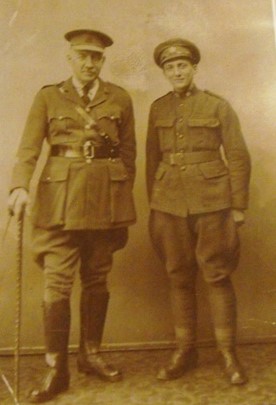Canadian Army Medical Corps

He was appointed to the rank of Captain on March 2, 1916 and joined the Army Medical Corps. He served in England and France. On May 9, 1916, he arrived in Boulogne, France and was stationed at the No. 3 General Hospital. He was attached for temporary duty to the No 13 British Station Hospital during the summer of 1916 and then returned to the No. 3 General Hospital. Main dealt with casualties from many battles during the First World War including those at Vimy Ridge. There were more than 10,500 casualties over the four-day battle. 7,707 of those occurred on April 9 and the early hours of April 10. The wounds that medical staff dealt with were more severe than previous battles due to the increased use of artillery. Charles’ son, Wilmot enlisted in August of 1917. He too joined the Medical Corps and served with his father in Europe. Charles had a very caring heart. He wrote numerous articles for the newspaper detailing his experiences in France as well as those of the soldiers. He was also an amateur photographer. During the war, he took hundreds of photos of life during war time focusing on family, the injured, special times and the dead. His pictures have been preserved by the family and have now been donated to the 8th Hussars Museum.
Charles Main was having some medical issues with ulcers and stomach ailments and was admitted to the hospital for a month in March, 1919. He set sail for Canada on August 13, 1919 and was discharged from service on November 18, 1919. Main returned to New Brunswick and established a long-term family practice on the corner of Charlotte and Watson Streets in the west side of Saint John. His son, Wilmot, would also come to Saint John to teach at Saint John Vocational School. Wilmot would go on to become Vocational’s second director from 1937-1965.
Dr. Charles Gilliland Main died at the age of 75 on September 7. 1940. He is buried in Fernhill Cemetery in Saint John. He was of great service to his country during the First World War and was fortunate enough to return home and help so many others through his medical practice. His family is very proud of Charles and Wilmot for their contributions to the war as well as their many accomplishments during their lifetimes.
